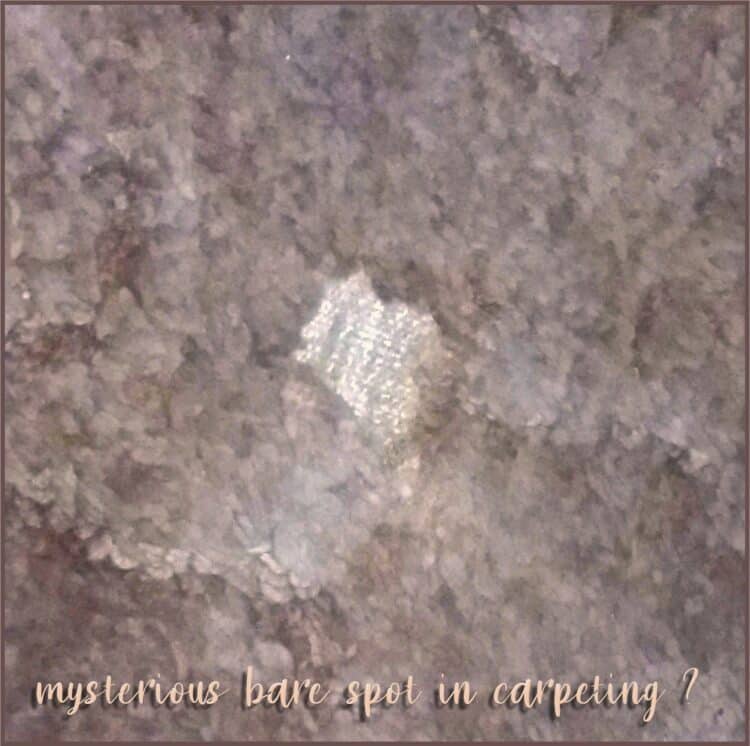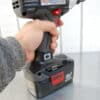
Getting a hole in the carpet can drive anyone nuts with worry, especially if you have visitors to host. But that isn’t enough reason to want to buy a replacement. You can quickly repair it.
Whether it’s your pet who enjoys the taste of your living room carpet or you accidentally burnt a hole on the mat with a cigarette butt, there’s no need to fret. In a couple of steps, you will have the situation under control.
How to fix a hole in the carpet is simpler than it may sound. All you need is to patch up your carpet. This method is cost-effective, simple, and works great at giving your carpet new life once more.
Table of Contents
What does carpet patching requires?
Carpet patching requires you to cut out the carpet area with the hole carefully and then use a patch from a donor carpet (of the same material, size, and design) to replace it. Although carpet patching isn’t a perfect solution, it’s an improvement of the original carpet with a hole.
What do you need to patch a carpet?
You will need several materials and tools to get the job done. Here are some of them:
- Old comb or a Seam roller
- A utility knife or a carpet knife
- Carpet tape, preferably double-sided, not heat bond and adhesive kind of tape
- Donor carpet
- Small piece of remnant carpet to improve the donor area
How to fix a hole in the carpet with carpet patching
Here are steps you can use to fix the damaged area of the carpet.
Find out how damaged the carpet is
When using carpet patching, it would be best first to find out how damaged the carpet is. This method of repair works great if the damaged area is small and localized.
The area should not be any bigger than one square foot. If numerous spots in the carpet needs repair, patching is not the best solution, and you may have to consider re-carpeting.
That applies if the damaged area is greater than a square foot. If it’s a small area, you can move on to the next step.
Get a donor carpet
When patching, you should use a replica of your damaged carpet. The donor carpet you find should be a new version of your carpeting type.
The last thing you want is your patchwork to be too obvious. If you use anything other than the replica, that is the effect you will get.
And no. even if you get a patch with the same color as your original carpeting or one that almost shares the patterns of your carpet, the patchwork will still be obvious.
So, where will you get the replica of your carpet? The first place you should try sourcing is where you stored the unused remnants while carpeting your home.
The leftovers from your original installation are usually the best option you can get. It provides the best donor materials.
So it won’t hurt if you hunt every single corner of your home for the remnants. You can check the basement, attic, and garage.
If you can’t find any, then you can purchase the remnants of your actual carpeting at the store.
All you need to know is your carpet’s brand, style, and other details.
That way, you can get the matching carpet. Or to make your work easier, you can visit the store where you bought your carpeting.
If the store still has your order information, they can get you the same carpeting for patching.
But that’s not all.
Sometimes, getting new remnants for your patching can be challenging. That is why you may need to use a different, less desirable option – cutting out tiny pieces from your existing carpet.
Sure, the option is the least desirable. But you only need to cut out what you need for the patching (not more than a square foot). Plus, the areas you cut are the ones hidden in the house.
You could cut the carpet:
- Under the staircase
- Under the beds
- In furnace closets or water heater closets
- Linen and clothing closets
- Under desks
- Under furniture you will not be moving in a long time like media cabinets
Clearly mark out the damaged area
You need to take an awl and mark out a square on the area with a hole or stains. You should ensure that the instrument presses into the carpet between tufts before you drag it.
That way, the tufts will separate, and you do not need to worry about cutting them out or fraying the carpet.
Cut out the unwanted area of the carpet
In this step, you need to use the utility knife to cut the damaged area. Follow the lines of the square.
While at it, you should avoid cutting the tufts and instead focus on just the carpet’s backing.
Once you finish cutting it out, ensure that you are careful while removing the damaged section.
If you notice that some of the fibers are still attached, do not pull the section out. That will only make you fray the carpet. Instead, use your knife to9 cut the attached fibers out.
Cut out the patch from the donor carpet
You need to use the cut out section of the damaged carpet to cut out the patch. You first need to layout the piece on top of the donor carpet.
Then take an awl and mark out the area using the top piece as a template. Now take the piece off and cut out the marked area.
Once again, be careful not to cut the tufts. Now move to the next step.
Find the nap direction of your carpeting
A carpeting nap usually runs in a single direction. You can find out which direction yours is running in by running your hand across the carpet in different directions.
Once you find the nap, do the same with your donor carpet. If you have carpets like trackless or Berber, or any other low pile carpet, this step is unnecessary.
Take your donor carpet and set it where you need to patch such that both it and your carpet follow the same nap direction.
Apply the tape
The thing about carpet tape is, it’s overly sticky and adhesive on both sides. That means you have only a single chance to get this right.
If you mess with the first tape and stick it wrongly or at the wrong place, you will need to discard it when you rip it off.
Additionally, cut the various strips of tape you need without removing the protective paper. At least four strips will do to cover the area you are patching adequately.
However, if your patch area is less than four square inches, only two will be necessary for each side of the patch. Before you apply the tape, you can remove the protective paper from only one side of the strip.
Then stick that end to the lower side of the patch section and press as firmly as possible for it to stick. You can repeat the procedure for the other three strips.
Blend the carpeting with the patch with a roller
Blending the patch and the carpet is not a challenging task. All you need to do is run your fingers across the carpeting in all directions.
You can use a comb, a carpet roller, or a dry cloth for the job. While at it, you should ensure that the edges also blend as evenly as possible. but if you rub on the edges too much, you may accidentally rip the edge tufts.
Try not to do that.
Patch the donor section
After blending the carpeting with the patchwork, the donor area may not be as visible as before.
However, if it still is, you can patch it up.
Use the remnants of carpeting you have and follow this same procedure to do it. Even so, this step is optional.
What type of carpet damage requires patching
Patching works great when your carpet is not damaged beyond repair. That means that the damage should be small.
For instance, if you have a stain you cannot get rid of, you may consider patching. Other damages that may require you to patch includes a hole in the carpet, a scorched mark, a worn or frayed carpet.
If the damage is too great, patching will appear obvious even with the best blending you have to provide. In that case, the best way forward is to re-carpet your home.
What should I do if I realize my carpet is wet
A wet carpet can be the perfect condition for the growth of mold and other unwanted things. Worse
still, it may bring out the worst smell you have ever had the displeasure of smelling.
But if you act fast, you can dry your carpet and save yourself a whole load of trouble. Here is how you can do that:
- The first step is assessing the situation. You need to find the source of moisture and
whatever is wetting your carpet. It can either be flooding or sewage, or even a broken pipe. - If the first two are the moisture source, you need to contact a professional to deal with the flooding and sewage. Plus, that renders your carpeting unsafe, and you should not keep it any
longer. - If a broken pipe is the issue, you need first to fix the broken pipe before you can treat
your carpet as soon as possible to prevent it from smelling. - The next step is drying your carpet using a wet vac or a fan. You should do this in less than
48 hours from when you discovered the wetness.
How do I fix pulls in my carpet after patching?
After patching your carpet, you need to inspect it for any pulls. If you notice even a snag, you need to fix it right away.
Firstly, you need to trim that pull. That can prevent the carpet from pulling even more. You then have to inspect it once more to find the source of the gap.
Once you find it, you can use glue to fix the gap. Only a small amount is necessary, though.
Additionally, it would be best to have a long thin tool like a pen to use for the next step. If it’s a pen you use, you can use the tip to pull the snag back into the gap.
You need to be gentle here so as not to cause more damage. Lastly, let the carpet dry.
Final thoughts
If you have a hole in your carpet, re-carpeting the entire house can feel a bit of an extreme.
That’s because it is. You can fix the situation easily by patching up the hole.
With these tips and straightforward steps, you can easily do that and save on re-carpeting costs.
It’s easy, economical, and effective. Try it at any time you need to fix a small area of your carpet.


